Best of its day, less in 1942
First line USN torpedo bomber in 1941-42, the Douglas TBD was caught before its replacement. Ordered in 1934, it entered service in 1937 and at the time, it was not only the most advanced USN aircraft, but possibly the most serious contender for the title of “world’s best carrier-borne TB”. The pace of aircraft development however caught up, and in June 1942 at Midway, the TBD reputation was destroyed while another Douglas, the Dauntless, won the day, in part because of how the events unfolded. Vastly outclassed for speed and agility while facing the Mitsubishi Zero, remaining TBDs were simply wiped out with little torpedo hits to their credits.
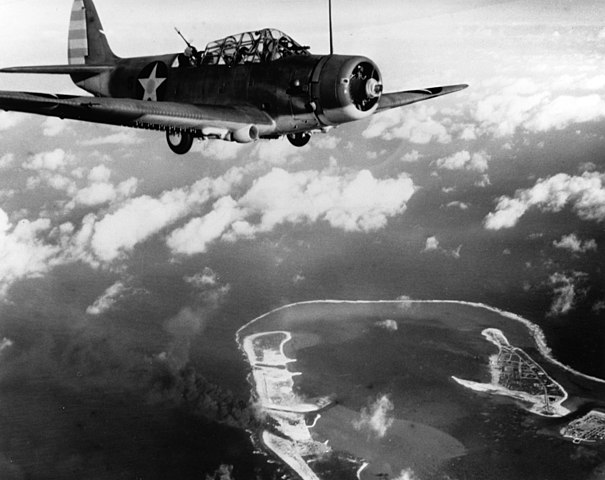
TBDs of VT-6 over Wake Island, 1942
But like the Vindicator, simply outclassed, much of this underserved reputation for abysmal performances had been attributed to the grave defaults of the US Mark 13 torpedo after the war. The Devastator went on to serve in second line duties for the remainder of the war, and started to be replaced by its more famous successor, the Grumman TBF Avenger in 1942. Its name was launched in late 1941 for easier identification, “Devastator” stuck; however its popular nickname soon became “torpecker”, most commonly used by sailors and pilots.
Initial development (1932-34)
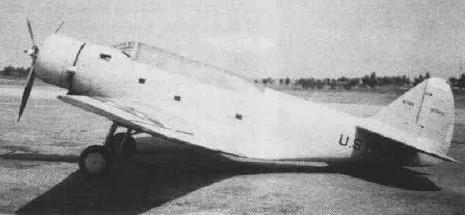
In 1933, a US Navy competition for new bombers based on aircraft carriers was initiated. Answering the call were companies such as Vought with its XSB2U Vindicator, Northrop with its BT-1, Brewster with its SBA and Douglas, with its XTBD-1. It was declared a co-winner with the Vought Devastator, and initially ordered on 30 June 1934. Also reviewed in a first turn were the Great Lakes XB2G and XTBG, the Grumman XSBF, Hall XPTBH and Vought XSB3U, which were not selected for further prototypes pre-production.
The XTBD Devastator first flew on 15 April 1935. Quite quickly its performances were judged very satisfactory with 332 kph in straight line at 2,000 m, about 350 in a dive, and it started to mark this year by its many innovations as well:
-First carrier-based monoplane
-First all-metal naval aircraft
-First with a completely enclosed cockpit
-First with hydraulically powered folding wings.
-First with a semi-retractable landing gear
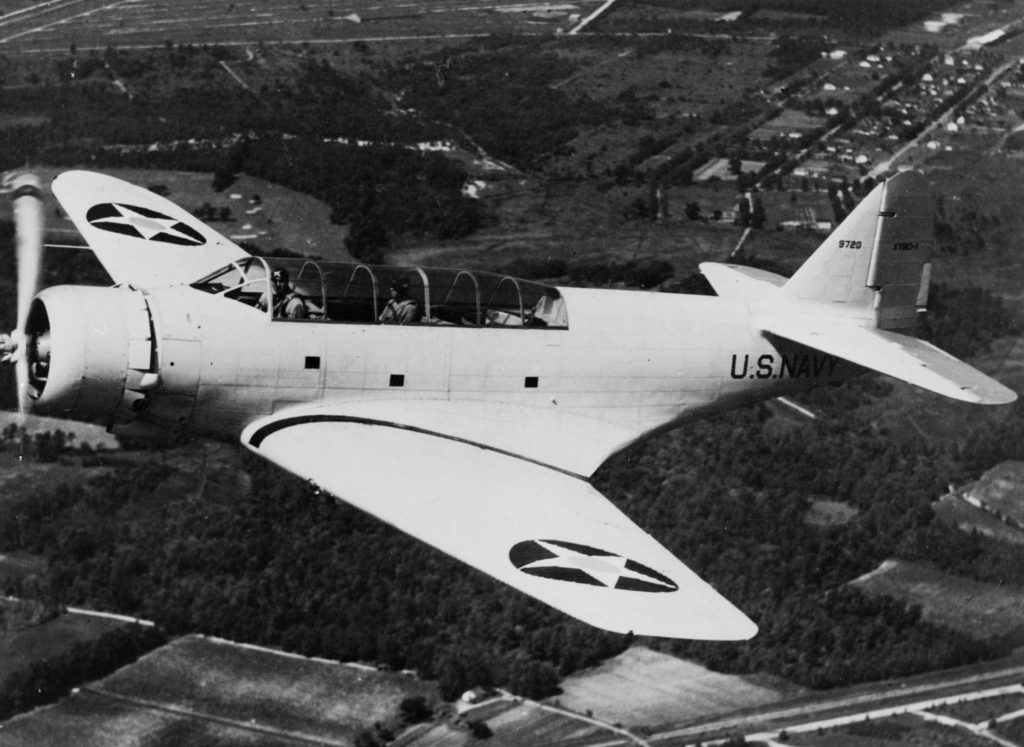
XTBD prototype with its initial canopy
The XTBD passed the Navy examination from 24 April to 24 November 1935 at NAS (Naval Air Station) Anacostia and Norfolk bases. Some points were noted for correction: The flat canopy seemed to not procure enough visibility and was to be replaced in production by a higher domed canopy, complete with a rollover bar. It can be folded in three parts. Tests pilots indeed insisted on improving visibility and the engine needed to be improved, while it was recommended a revised engine cowling. But other than that, the prototype passed its acceptance trials with ease. Next, the prototype underwent torpedo drop tests which were also successful. Last step, for pre-production test, the XTBD was provisionally transferred to one of Lexington’s TB group, for carrier certification. Thes extended trials went on until 1937, and later the first two production aircraft delivered by Douglas, were by it, exclusively for testing. The USN ordered a full production run indeed, called the TBD-1, for delivery and service in late 1937, with a 850 hp engine.
Deliveries went on from 1937 to 1939, 128 in all, 130 with the XTBD-1 prototype and a single experimental TBD-1A. With the two retained by Douglas, this left 126 delivered to VT-2 to VT-8, but also VB-4 VS-42, VS-71, VS-72, VU-3 and the US Marine Corps.
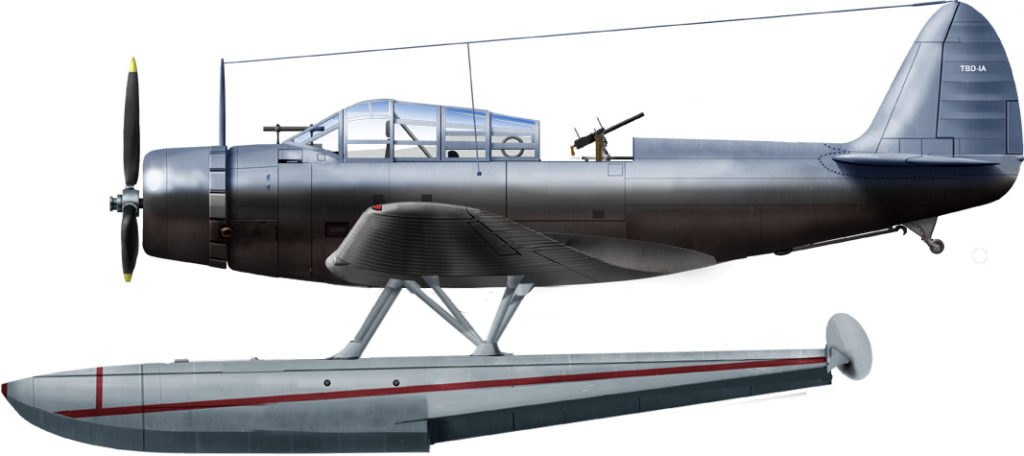
Douglas TBD-1A: It was equipped with floats for testing, as for the Vindicator and Dauntless later. It was judged interesting to procure the navy a catapulted torpedo bomber, to the Currituck class still in service or the USS Curtiss. Later during the war, the US Navy would operate newly-built USS Currituck, Pine Island and Norton Sound, USS Tangier and Timbalier.
With 130 built versus 9,900 Avengers, the Devastator seems to be a footnote of history, but it was the frontline US Navy dedicated torpedo bomber until the fateful battle of Midway, at mid-point during the war.
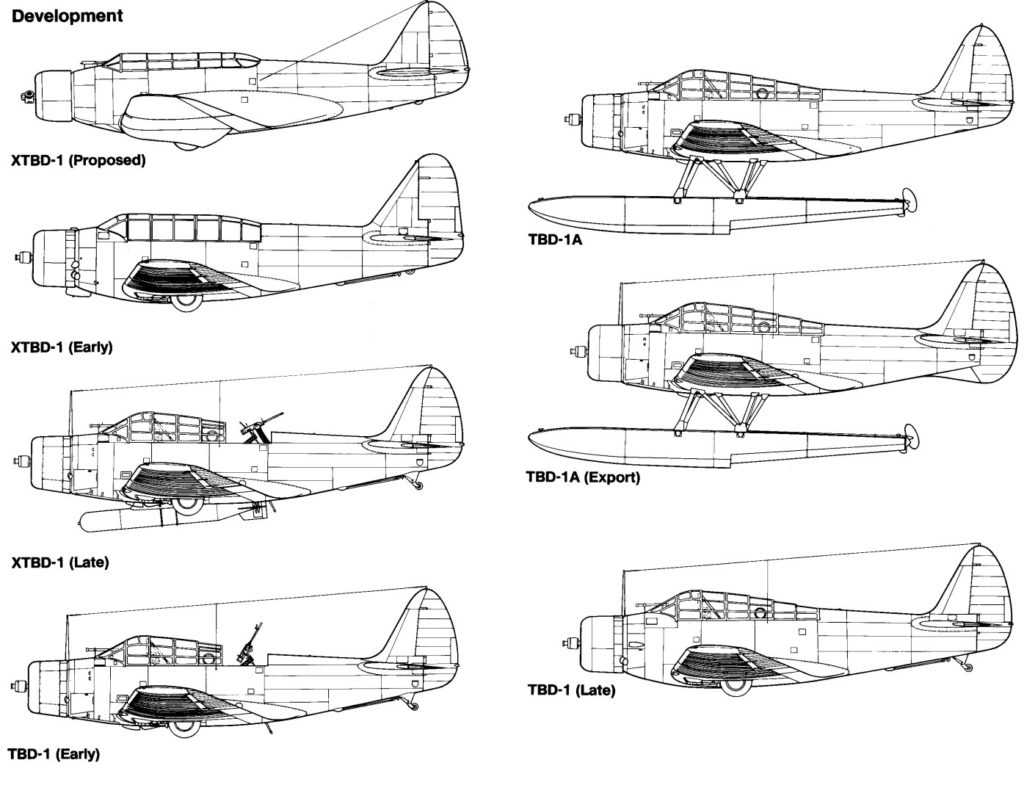
Variants of the TBD-1, including the prototype and above, first paper proposal sketch
Design of the Devastator
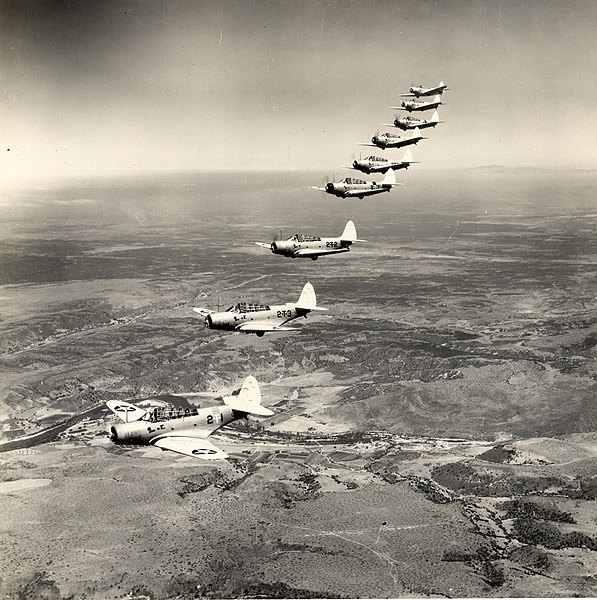
The complete VT-2 squadron in flight training, 6 January 1942
General characteristics
Outside the modified “high visibility” roomy canopy, the Devastator had a favourable wing load ratio due to its large wings (Wing area 422 square feets, or 39.2 m2), allowing to carry heavy payloads (heavier than the actual aerial 18-in torpedoes of 1937). Among others, the choice of a semi-retractable landing gear, with wheels protruding 10 in below (250 mm) had the advantage of potentially limiting damage to the underbelly in case of force crash landing.
It had an overall length of 35 ft 0 in (10.67 m), a wingspan of 50 ft 0 in (15.24 m), a total height of 15 ft 1 in (4.60 m), ad it weighted 5,600 lb (2,540 kg) light, 9,289 lb (4,213 kg) fully loaded with an indicated max take-off weight of 10,194 lb (4,624 kg).
The crew comprised normally three men, the pilot at the front, a rear gunner/radio operator aft, and the bombardier in the middle seat. The latter in order to do its job layed prone, sliding into position under the pilot, and man his Norden bombsight seeing through a bottom fuselage window. This process was repeated, but with a permanent gondola for the Avenger. But it made the Devastator a bit “fattier” as a result, with a lower penetration coefficient, also cause by the taller greenhouse. A single torpedo was carried under the belly of the aircraft, activated by the bombardier.
Powerplant and Performances
The Devastator’s powerplant was a Pratt & Whitney R-1830-64 (the prototype had the previous R-1830-60, 800 hp) Twin Wasp radial engine, which developed 850 hp (630 kW). The XR-1830-60/R-1830-1 was its predecessor. The final version of the 14 cylinder air cooled radial engine developed 900 hp and drove a 3-bladed variable-pitch propeller.
Performances wise, its top speed at at 8,000 ft (2,400 m) was 206 mph (332 km/h, 179 kn), but normal cruise speed was limited to 128 mph (206 km/h). Its rate of climb was 720 ft/min (3.7 m/s) and its Service ceiling of 19,500 ft (5,900 m). The internal tanks procured enough gasoline for a range of 435 mi (700 km, 378 nmi) with the Mark 13 torpedo, and up to 716 mi (622 nmi; 1,152 km) with 1,000 lb (450 kg) bombs.
Armament
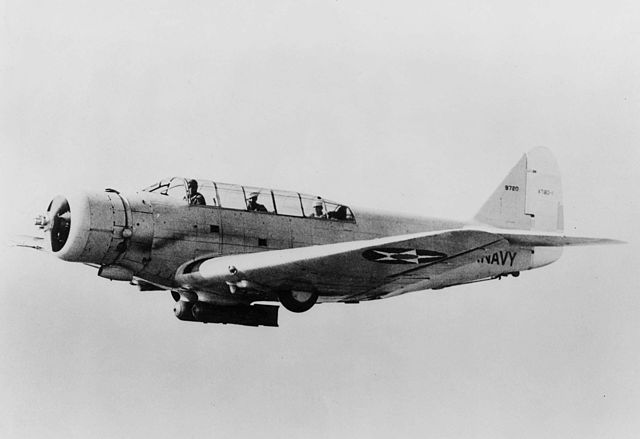
The XTBD prototype carrying 500 ibs bombs under the fuselage undersides in trials, 1935
The TBD was designed as a torpedo carrier first, and a bomber, but in standard strafing attack since it never was designed with diving in mind.
-Torpedo: 1,935 lb (878 kg) Bliss-Leavitt Mark 13 aerial model
-1,000 lb (450 kg) bomb carried semi-recessed fuselage underside.
-Three 500 lb (230 kg) general-purpose bombs (wing root, bomb bay)
-Twelve 100 lb (45 kg) fragmentation bombs (six under each wing root)
These were often used in the attacks of the Gilbert and Marshall Islands in 1942. 7
-Defensive armament: .30 in (7.62 mm) Browning machine gun, rear gunner.
-Offensive armament: Starboard side cowling .30 in (7.62 mm)/.50 in (12.7 mm) M2HB
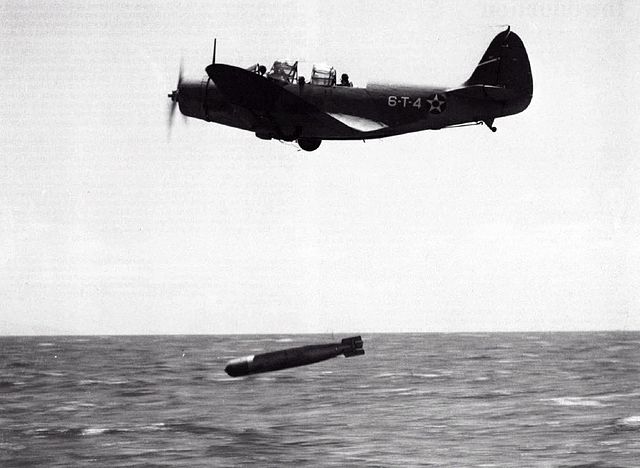
TBD dropping a Bliss-Leavitt Mark 13 aerial torpedo
The Devastator in service
The US Navy’s Bureau of Aeronautics (BuAer), impressed by the prototype ordered a batch of 129 of the first version for the squadrons based onboard USS Saratoga, Enterprise, Lexington, Wasp, Hornet, Yorktown and Ranger, from 1937 onwards. However in 1939 some were already reclassed in training duties or as target tugs. By 1940, the US Navy realized the Devastator was obsolete, whereas its replacement, the Grumman TBF Avenger, was still in development.
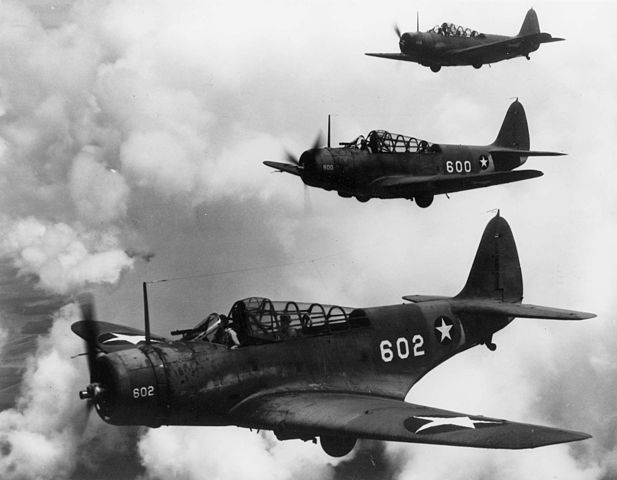
TBDs over Florida in 1942
Early Operations
Due to attrition only 100 when serviceable in December 1941. During February-March 1942, nevertheless, TBDs from USS Enterprise and Yorktown did well nevertheless in the Marshall and Gilbert, Wake and Marcus Islands. Those from USS Yorktown and Lexington made proper work in New Guinea on 10 March. The Battle of the Coral Sea saw them hitting and co-sinking the aircraft carrier IJN Shōhō on 7 May, but failing to hit IJN Shōkaku a day afterwards. Many occasions were created, sometimes at great cost, but it as soon discovered too many of these “hits” translated into duds. Later, the Mark 13 fingers pointed due to their faulty contact exploder, while they had a tendency to run deeper than the set depth. Part of the great “torpedo scandal” proper to the US Ordnance, it took one full year to be admitted, then corrected, a bit sooner than the Mark 14.
The turkeys of Midway
The great test Battle of Midway was on 4 June 1942. By that time, these pilots took off, knowing they carried faultly torpedoes. A total of 41 Devastators were launched from USS Hornet, Enterprise and Yorktown, combined against the Japanese fleet’s Kido Butai. Not only sorties were not well coordinated, rushed by Spruance as soon as the enemy carriers were discovered, rather than taking to time to assemble a large squadron in the air, with their escorts, so much was the fear the Japanese would arrive in the meantime. Therefore fighters, bombers and torpedo planes went in penny packets, dangerously exposed. TBDs from Hornet and Enterprise eventually lost contact with their fighter escort, but and started their attacks nonetheless. Soon, facing a swarm of zero fighters and furious AA, their deficiencies for that time (May 1942) were telling: Between their low speed and agility, poor armor and approach under 200 mph (320 km/h) made them easy meat and proved a death trap for their pilots. The torpedo was also responsible for this, as it needed to be released below 115 mph (185 km/h) for accuracy, which required a long, straight-line attack run. This made them easy targets, and as a result, only four made it back to the three careers. Not a single torpedo hit was recorded, but it’s possible the few which effectively hits turned to be duds. A few also arrived so close as to launch their torpedoes and strafed the ships, and they forced the Japanese carriers to start sharp evasive maneuvers.
That was a great price to pay, but it was not all in vain: Their attack acted as a distraction for Japanese defense, while at high altitude, swarms of Dauntless had eventually assembled by miracle and arrived, also by miracle, coordinated over the fleet. The Japanese also had to keep their flight decks clear and to continually cycle, focusing on their own combat air patrols. In turn this much delayed their own counterstrike, which is something Spruance had anticipated. Late to the party, the Douglas SBD Dauntless dive bombers Lt.C. Wade McClusky and Max Leslie had a clear sky to hit three of the four Japanese carriers. The AA guns were turned at the sea and the defensive fighter patrols away when it all happened.
Retirement
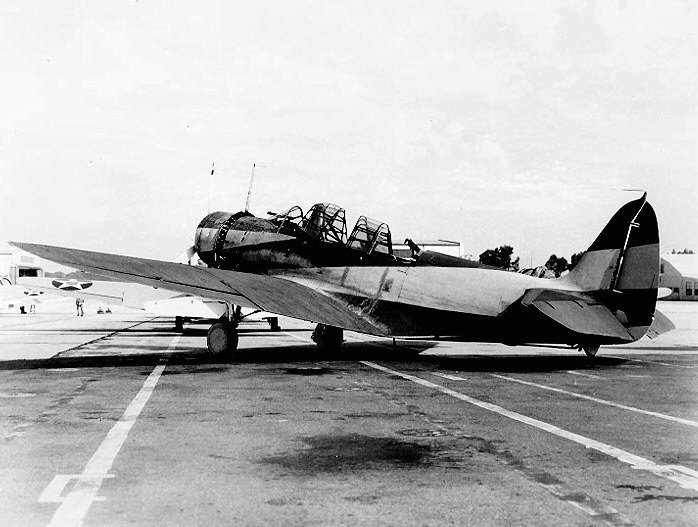
A TBD in experimental camouflage in 1940
The Navy withdrew its remaining 39 TBDs after their understandable debacle at Midway. These surviving Devastators stayed in VT-4 and VT-7, affected to Atlantic command, and in training squadrons until 1944. They were used to train both pilots and mechanics and some airframes were destroyed during instructional firefighting. In late 1944 the Navy had no Devastator left in the US Navy but the prototype survived at NAS Norman in Oklahoma. The last operational TBD-1 was used by Commander of Fleet Air Activities-West Coast, scrapped in November 1944 so nobody can see a preserved example today.
However the US Navy was not satisfied either by the new TBF Avenger after entering service as its early version was riddled with issues in 1942. At midway, the first deployed had little success: Only one of five ever scored a hit. They had better chance against the light carrier IJn Ryūjō and battleship IJN Hiei later that year. But over time, the planes improved, new aerial torpedoes were received as well as the fixed Mark 13, and pilots gained experience, as well as a better coordinated fighter cover. This all came together in the fall of 1943. So the more famous Avenger seemed a progress, but it was just a piece of a larger puzzle.
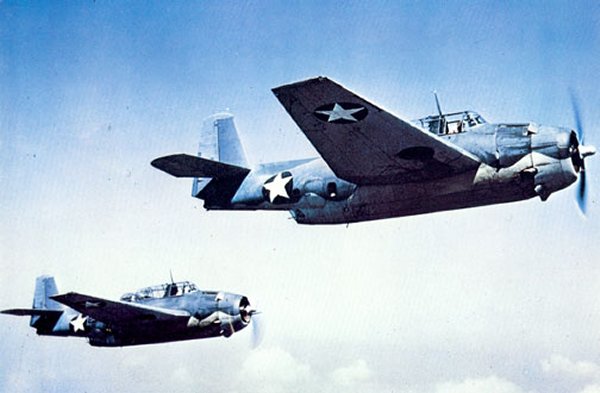
The replacement of the Devastator, the Grumman TBD Avenger, was an improvement, but still not as successful as anticipated at least until the end of 1943, somewhat redeeming the Douglas.
TBD-1 Specifications |
|
| Dimensions: | 10,67 x 15,24 x 4,60 m (35 x 50x 15 ft) |
| Weights: | Empty/Gross/MTo weight: 5,600/9,289/10,194 lb |
| Crew: | 3: Pilot, Torpedo officer/navigator, Radio/Gunner |
| Propulsion: | Pratt & Whitney R-1830-64 Twin Wasp 14-cyl. 2-row AC radial, 900 hp (670 kW) |
| Propeller: | 3-bladed variable-pitch propeller |
| Top/Cruise speed: | 206 (332 kph)/128 mph (206 kph) at 8,000 ft |
| Range: | 435 mi (700 km) torpedo/716 mi (1,152 km) 1,000 lb bombs |
| Service ceiling: | 23,600 ft (7,200 m) |
| Rate of climb: | 19,500 ft (5,900 m) |
| Time to altitude: | 720 ft/min (3.7 m/s) |
| Armament | Fixed fwd 0.3/0.5 in MG, pintle 0.3 in defense, see notes |
| Armor | None |
Src/Read more:
Adcock, Al. TBD Devastator in Action, Aircraft Number 97. Carrollton, TX: Squadron/Signal Publications Inc., 1989.
Buell, Thomas B. The Quiet Warrior: A Biography of Admiral Raymond A. Spruance. Annapolis, MD: US Naval Institute Press, 1987.
Cressman, Robert B. et al. A Glorious Page in Our History: The Battle of Midway, 4–6 June 1942. Missoula, MT: Pictorial Histories Publishing Company, 1990. ISBN 978-0-929521-40-4.
“Devastator…The Not-so-Devastating TDB-1”. Air International
Dolan, Edward F. Jr. Hollywood Goes to War. London: Bison Books
Doll, Thomas E. The Douglas TBD Devastator, Aircraft in Profile Number 171. Leatherhead, Profile Publications Ltd.
Doll, Thomas E. SB2U Vindicator in action, Aircraft Number 122. Carrollton, TX: Squadron/Signal Publications Inc., 1992.
Drendel, Lou. U.S. Navy Carrier Bombers of World War II. Carrollton, TX: Squadron/Signal Publications Inc., 1987.
Ginter, Steve. Douglas TBD-1 Devastator, Naval Fighters Number Seventy-one. Simi Valley, California: Ginter Publishing Company, 2006.
Gunston, Bill. The Encyclopedia of the World’s Combat Aircraft: A Technical Directory of Major Warplanes from World War 1 to the Present Day. Chartwell Books
Hardwick, Jack and Ed Schnepf. “A Viewer’s Guide to Aviation Movies”. The Making of the Great Aviation Films, General Aviation Series, Volume 2, 1989.
Jackson, B.R. and Thomas E. Doll. Douglas TBD-1 “Devastator”, Aero Series 23. Fallbrook, CA: Aero Publishers, 1973.
Kinzey, Bert. U.S. Navy and Marine Aircraft of World War II, Part 1: Dive and Torpedo Bombers. Northbrook, Illinois: Revell-Monogram, LLC, 2003.
Lawson, Robert and Barrett Tillman. U.S. Navy Dive and Torpedo Bombers of WWII. St. Paul, MN: MBI Publishing Company, 2001.
Mondey, David. “Douglas TBD Devastator.” The Hamlyn Concise Guide to American Aircraft of World War II. London: Bounty Books, 2006.
Nowicki, Jacek. Douglas TBD Devastator – SBD Dauntless (Wydawnictwo Militaria 119) (in Polish). Warszawa, Poland: Wydawnictwo Militaria, 2000.
Orriss, Bruce. When Hollywood Ruled the Skies: The Aviation Film Classics of World War II. Hawthorne, California: Aero Associates Inc., 1984.
Parshall, Jonathan B. and Anthony P. Tully. Shattered Sword: The Untold Story of the Battle of Midway. Washington, DC: Potomac Books, 2005.
Taylor, John W.R. “Douglas TBD Devastator”. Combat Aircraft of the World from 1909 to the Present. New York: G.P. Putnam’s Sons, 1969.
Tillman, Barrett. “Go in and get a hit!: The Navy’s last combat torpedo bombers.” Airpower, Volume 3, No. 4, July 1973.
Tillman, Barrett. TBD Devastator Units of the U.S. Navy, Combat Aircraft Vol. 20. Oxford, UK: Osprey Publishing, 2000.
Tillman, Barrett and Robert L. Lawson. U.S. Navy Dive and Torpedo Bombers of WWII. St. Paul, Minnesota: MBI Publishing Company, 2001.
Winchester, Jim. “Douglas TBD Devastator.” Aircraft of World War II (The Aviation Factfile). Kent, UK: Grange Books plc, 2004.
Sites:
Naval Historical Center archives
Same, color photos at Midway
www.daveswarbirds.com/usplanes/aircraft/devastat.htm
www.aviation-history.com/douglas/tbd.html
On popular mechanics
On tripod
en.wikipedia.org/wiki/Douglas_TBD_Devastator
commons.wikimedia.org/wiki/Category:Douglas_TBD_Devastator
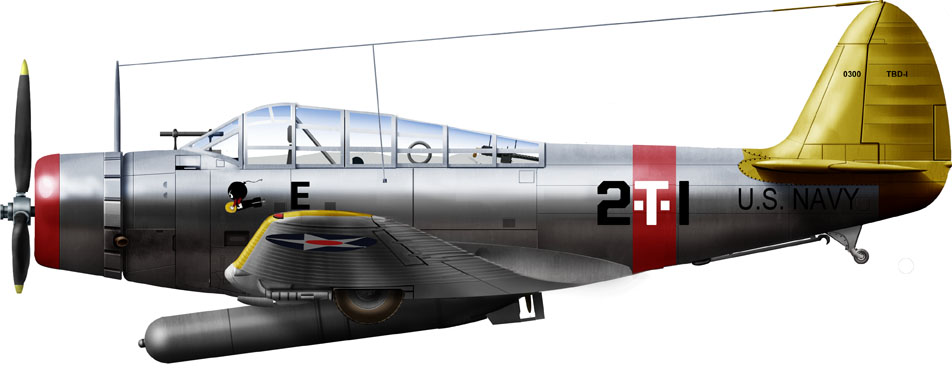
VT-2, USS Lexington, 1939
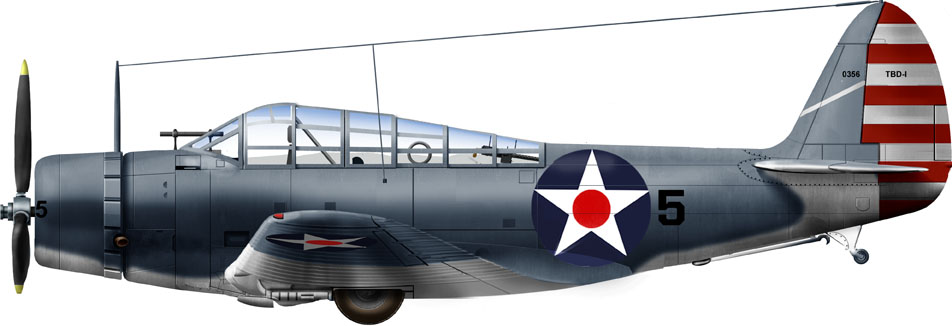
VT-6 Kwajalein raid, 1st February 1942. Note the prewar roundel and striped tail
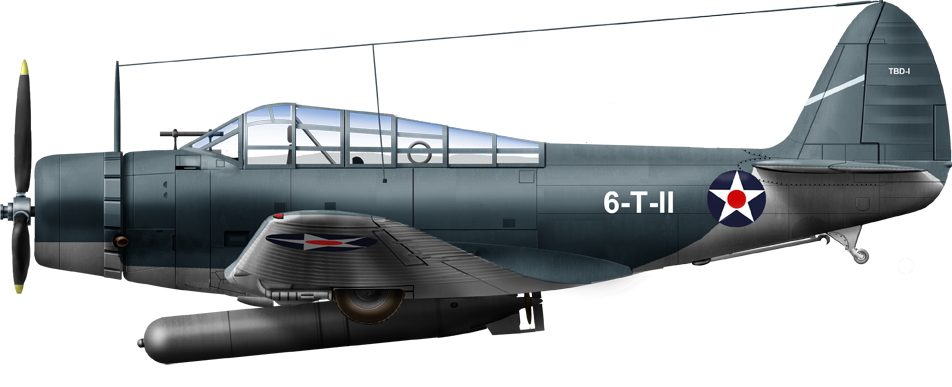
TB-1 6-T-II of VT-6 in May 1942. They just had been repainted for the original tactical light grey overall
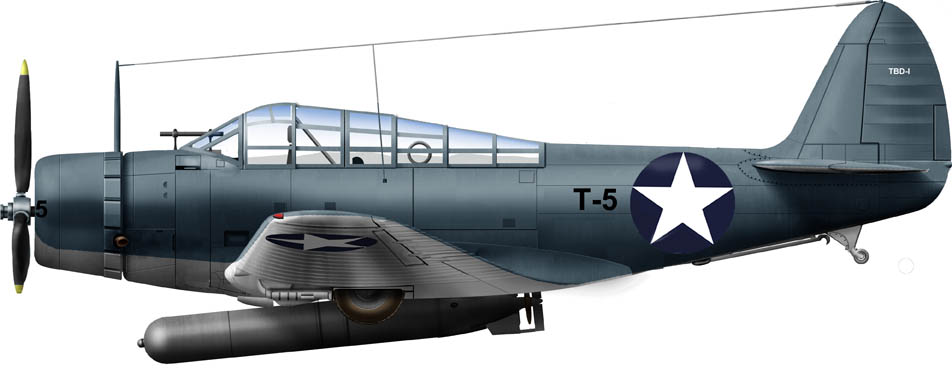
Douglas TBD-1 Devastator of VT2 at the batttle of Coral Sea May 1942
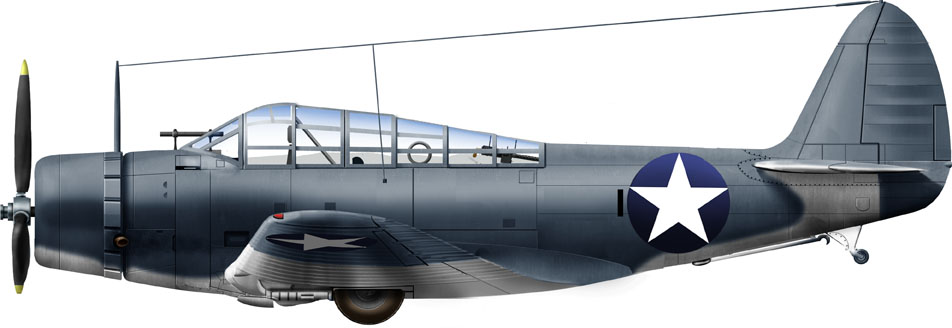
VT-6 (USS Enteprise), personal plane of Lt. Cdr Eugene Lindsay, Midway June 1942

TBD-1 at NAS Corpus Christi, Texas, August 1942
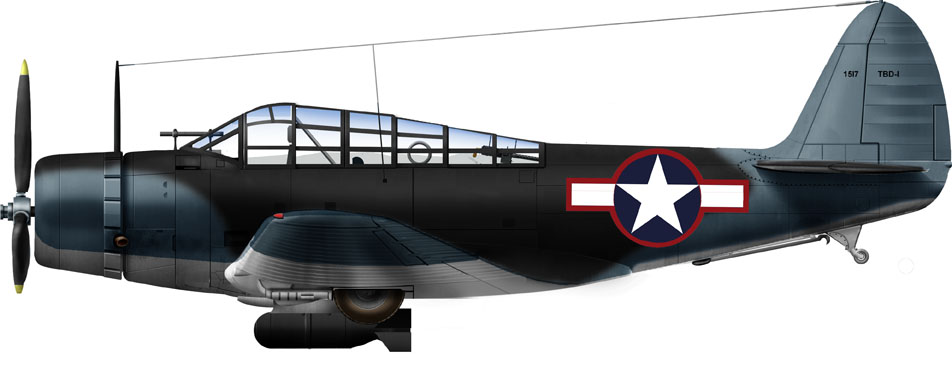
TBD-1s served at NAS Miami, from 29 October 1942 to 31 December 1943 as advanced trainers.
Photos
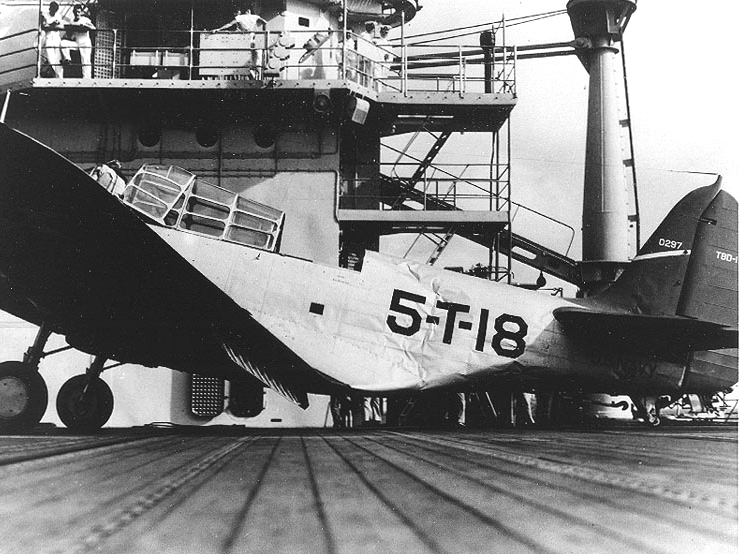
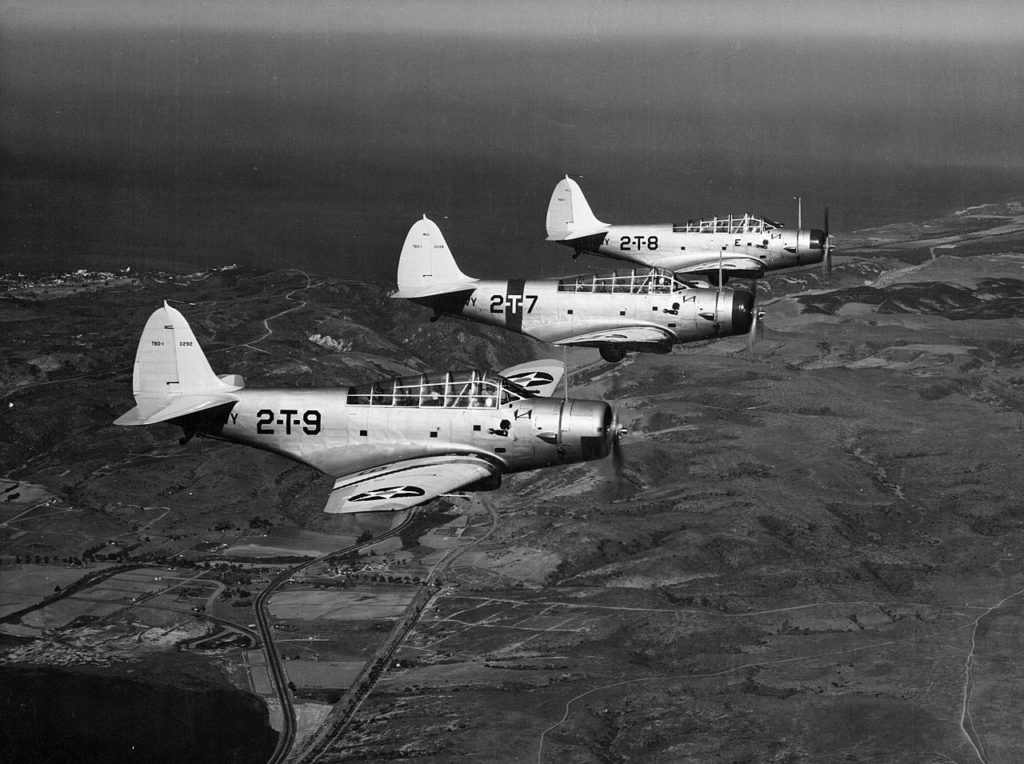
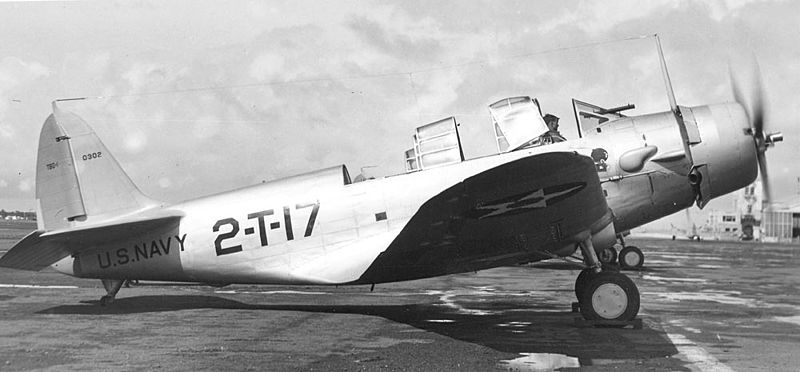

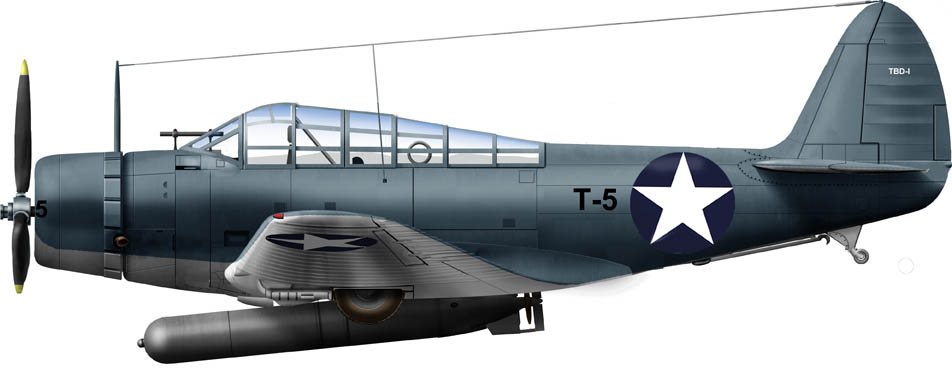


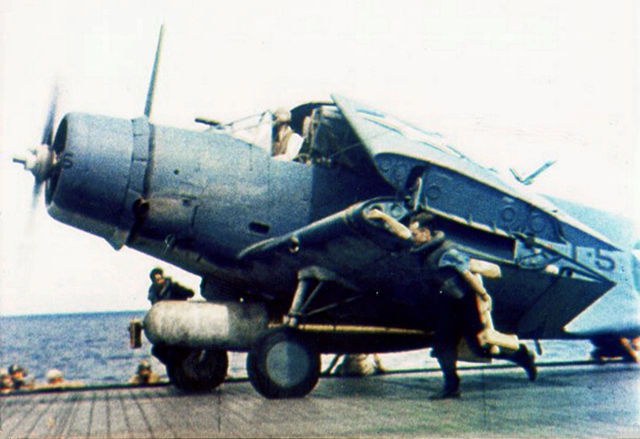
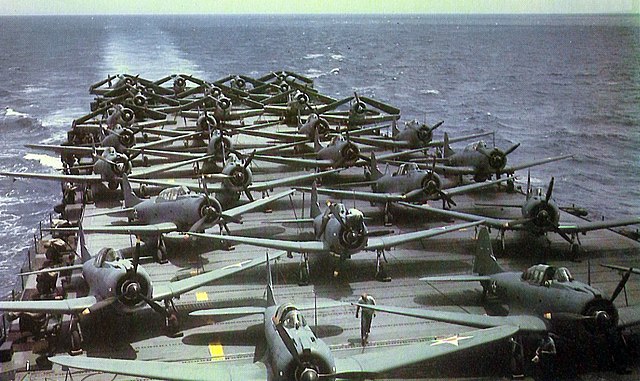
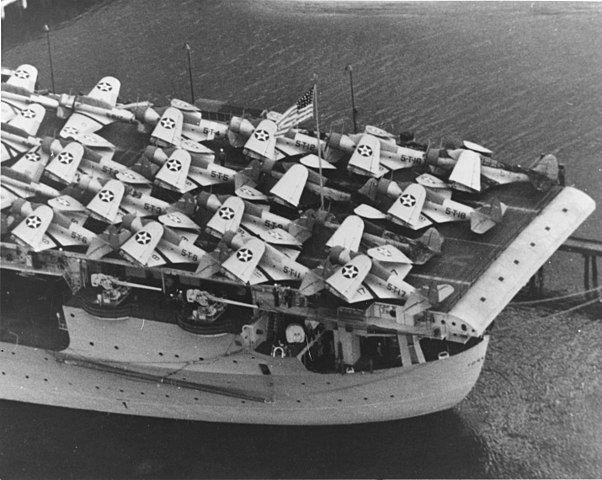
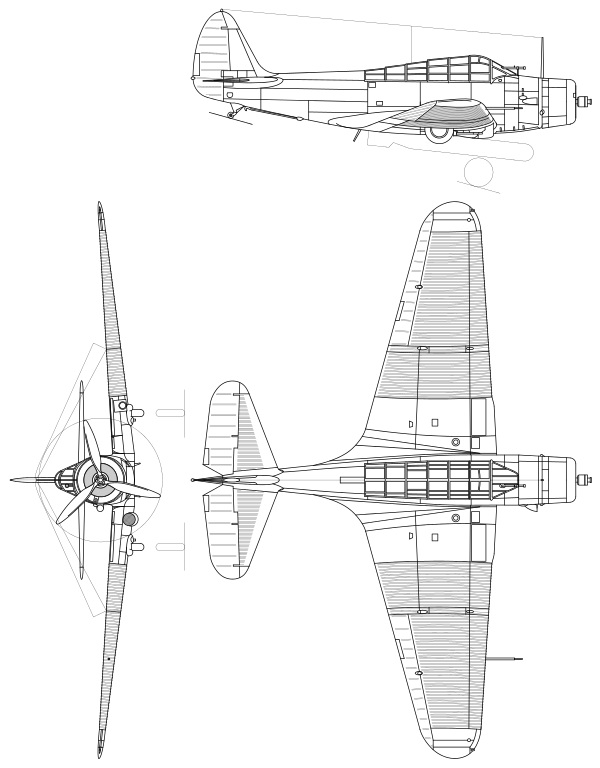
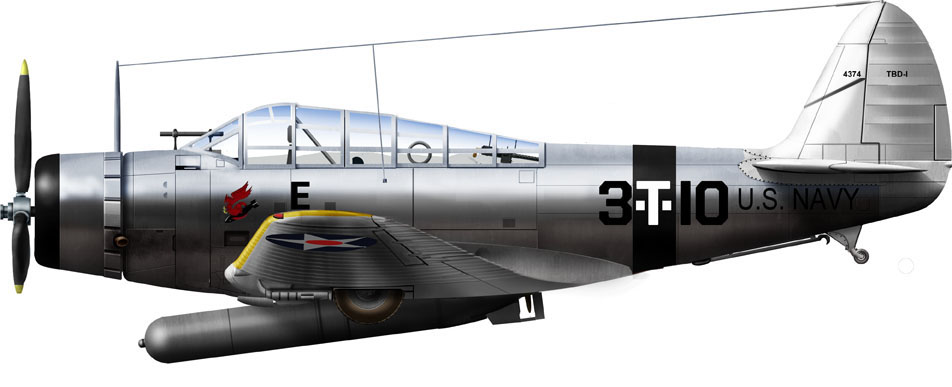
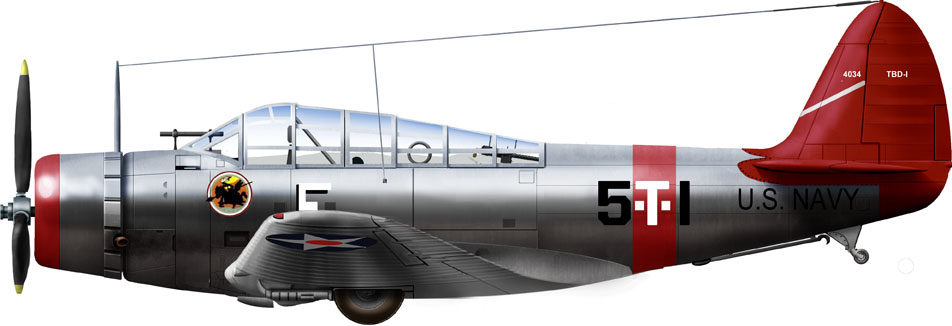
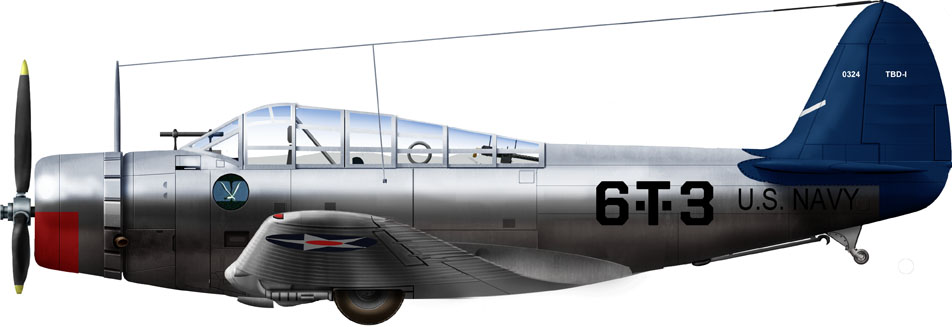
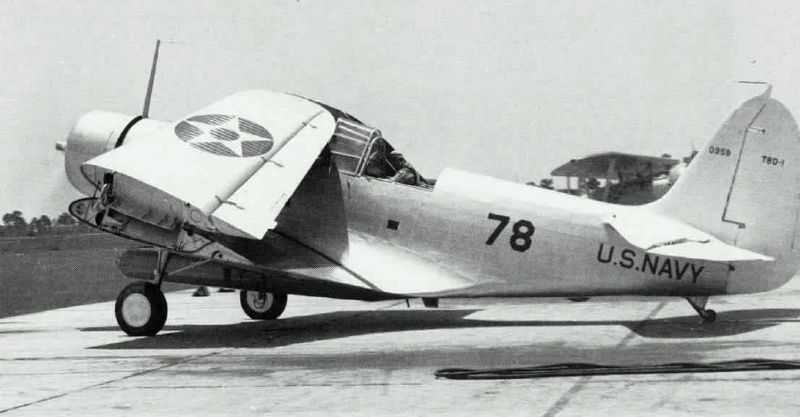
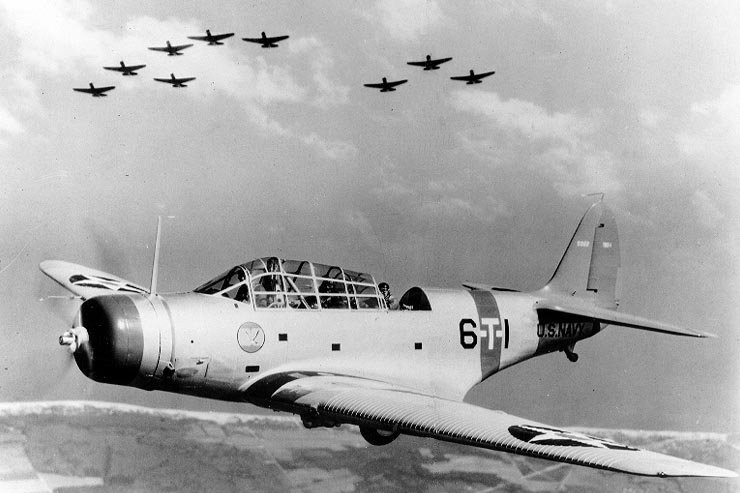
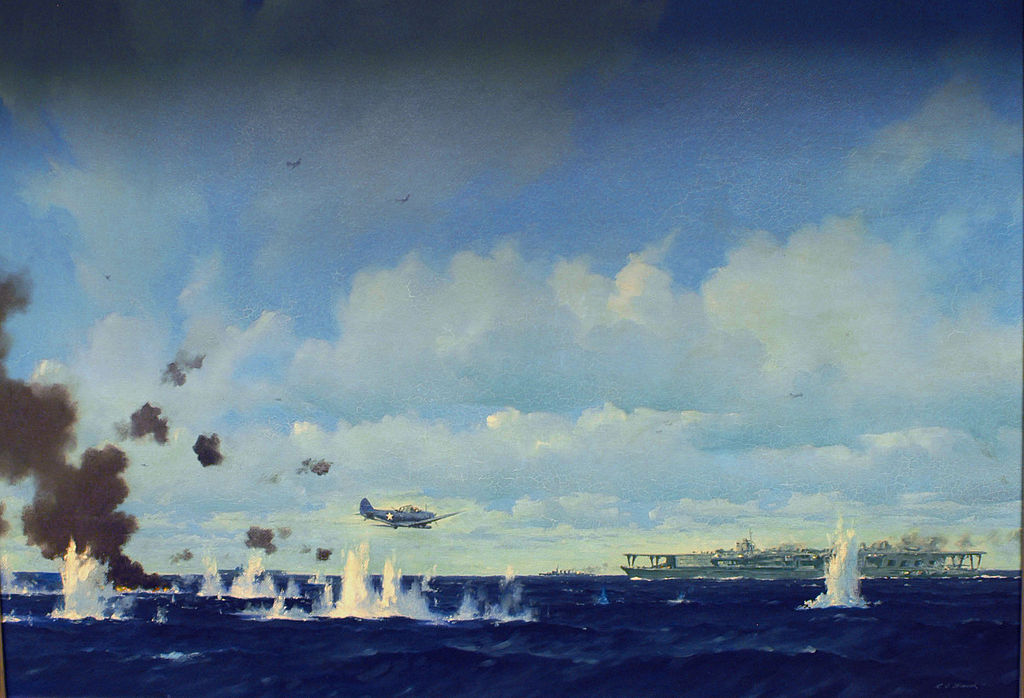
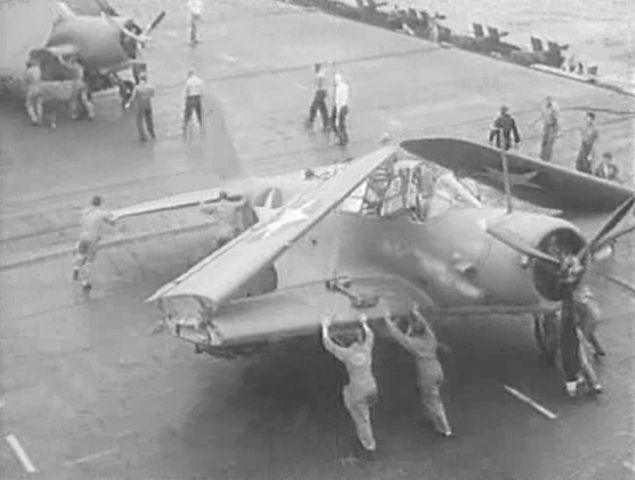
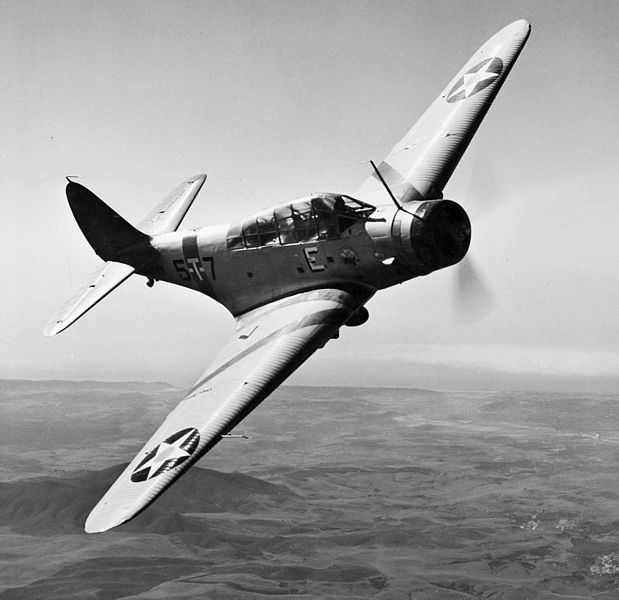
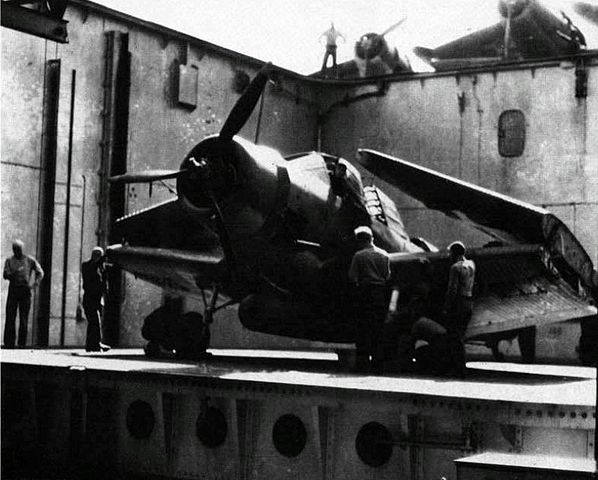
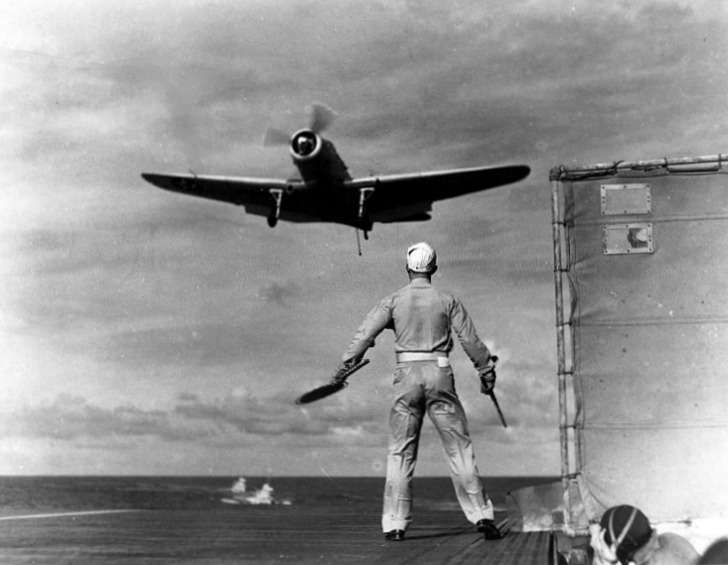

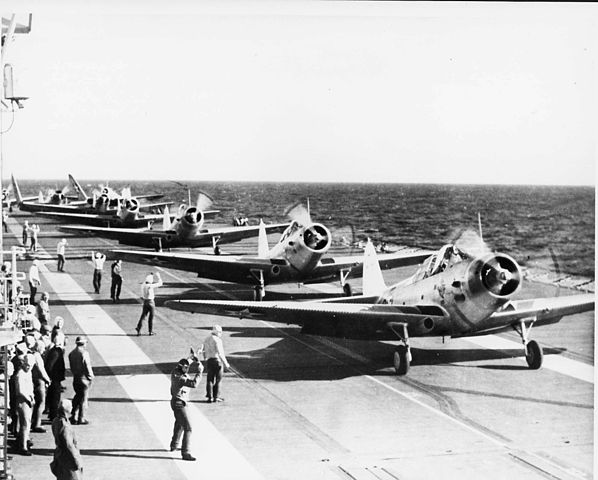
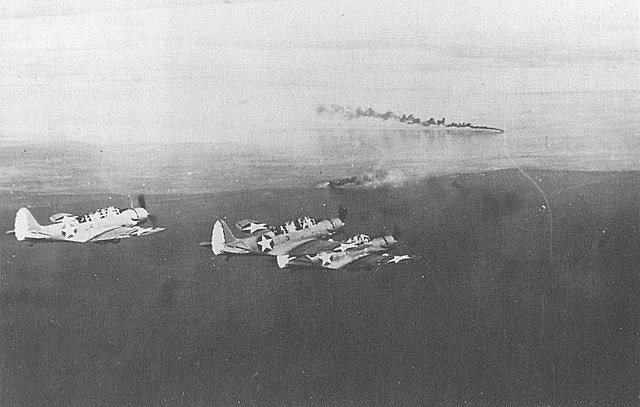
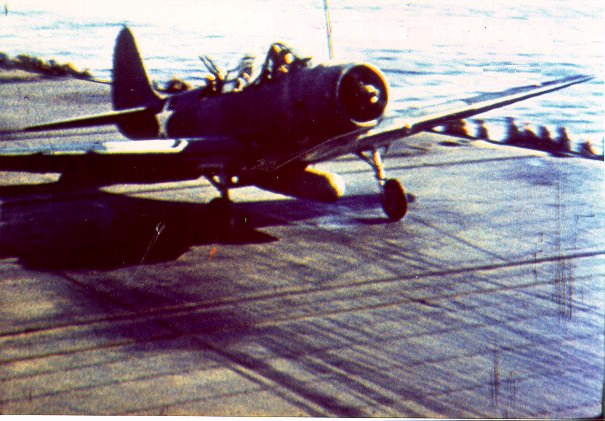
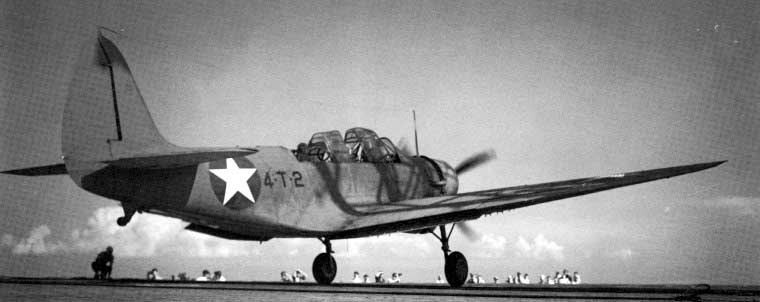
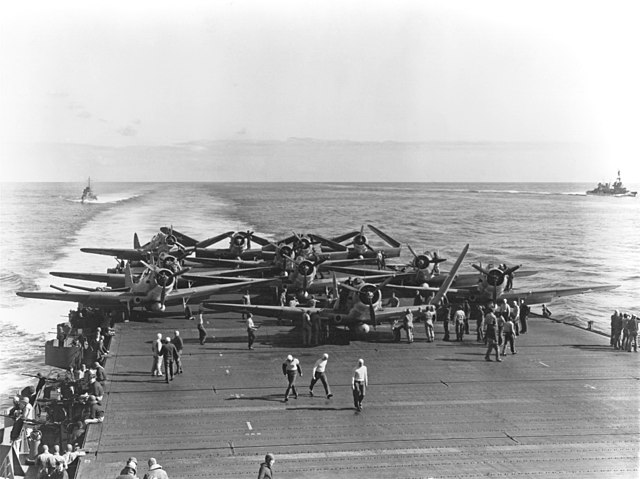
 Latest Facebook Entry -
Latest Facebook Entry -  X(Tweeter) Naval Encyclopedia's deck archive
X(Tweeter) Naval Encyclopedia's deck archive Instagram (@navalencyc)
Instagram (@navalencyc)





 French Navy
French Navy Royal Navy
Royal Navy Russian Navy
Russian Navy Armada Espanola
Armada Espanola Austrian Navy
Austrian Navy K.u.K. Kriegsmarine
K.u.K. Kriegsmarine Dansk Marine
Dansk Marine Nautiko Hellenon
Nautiko Hellenon Koninklije Marine 1870
Koninklije Marine 1870 Marinha do Brasil
Marinha do Brasil Osmanlı Donanması
Osmanlı Donanması Marina Do Peru
Marina Do Peru Marinha do Portugal
Marinha do Portugal Regia Marina 1870
Regia Marina 1870 Nihhon Kaigun 1870
Nihhon Kaigun 1870 Preußische Marine 1870
Preußische Marine 1870 Russkiy Flot 1870
Russkiy Flot 1870 Svenska marinen
Svenska marinen Søværnet
Søværnet Union Navy
Union Navy Confederate Navy
Confederate Navy Armada de Argentina
Armada de Argentina Imperial Chinese Navy
Imperial Chinese Navy Marinha do Portugal
Marinha do Portugal Mexico
Mexico Kaiserliche Marine
Kaiserliche Marine 1898 US Navy
1898 US Navy Sovietskiy Flot
Sovietskiy Flot Royal Canadian Navy
Royal Canadian Navy Royal Australian Navy
Royal Australian Navy RNZN Fleet
RNZN Fleet Chinese Navy 1937
Chinese Navy 1937 Kriegsmarine
Kriegsmarine Chilean Navy
Chilean Navy Danish Navy
Danish Navy Finnish Navy
Finnish Navy Hellenic Navy
Hellenic Navy Polish Navy
Polish Navy Romanian Navy
Romanian Navy Turkish Navy
Turkish Navy Royal Yugoslav Navy
Royal Yugoslav Navy Royal Thai Navy
Royal Thai Navy Minor Navies
Minor Navies Albania
Albania Austria
Austria Belgium
Belgium Columbia
Columbia Costa Rica
Costa Rica Cuba
Cuba Czechoslovakia
Czechoslovakia Dominican Republic
Dominican Republic Haiti
Haiti Hungary
Hungary Honduras
Honduras Estonia
Estonia Iceland
Iceland Eire
Eire Equador
Equador Iran
Iran Iraq
Iraq Latvia
Latvia Liberia
Liberia Lithuania
Lithuania Mandchukuo
Mandchukuo Morocco
Morocco Nicaragua
Nicaragua Persia
Persia San Salvador
San Salvador Sarawak
Sarawak Uruguay
Uruguay Venezuela
Venezuela Zanzibar
Zanzibar Warsaw Pact Navies
Warsaw Pact Navies Bulgaria
Bulgaria Hungary
Hungary

 Bundesmarine
Bundesmarine Dutch Navy
Dutch Navy Hellenic Navy
Hellenic Navy Marina Militare
Marina Militare Yugoslav Navy
Yugoslav Navy Chinese Navy
Chinese Navy Indian Navy
Indian Navy Indonesian Navy
Indonesian Navy JMSDF
JMSDF North Korean Navy
North Korean Navy Pakistani Navy
Pakistani Navy Philippines Navy
Philippines Navy ROKN
ROKN Rep. of Singapore Navy
Rep. of Singapore Navy Taiwanese Navy
Taiwanese Navy IDF Navy
IDF Navy Saudi Navy
Saudi Navy Royal New Zealand Navy
Royal New Zealand Navy Egyptian Navy
Egyptian Navy South African Navy
South African Navy






























 Ukrainian Navy
Ukrainian Navy dbodesign
dbodesign